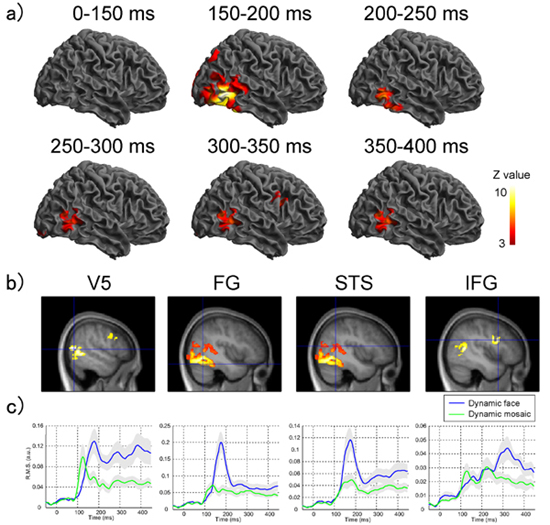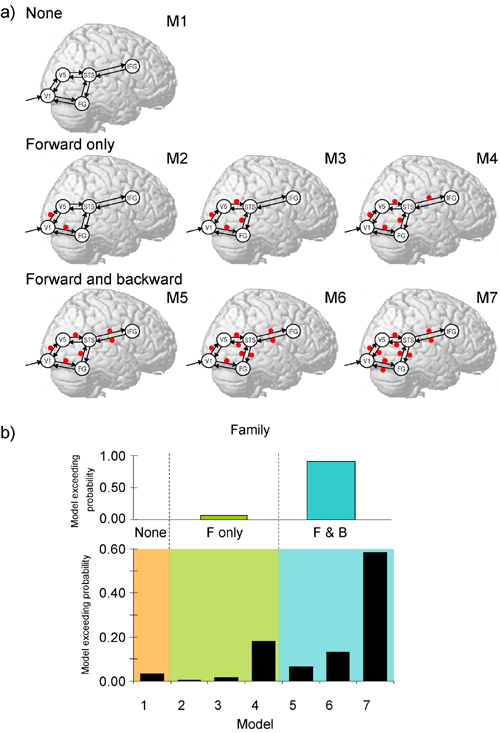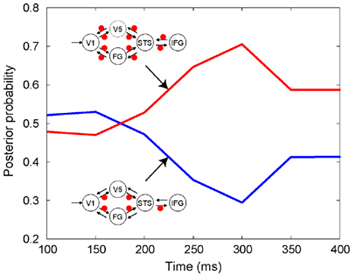SATO Wataru Laboratory
Spatiotemporal neural network dynamics for the processing of dynamic facial expressions
(Sato*, Kochiyama*, & Uono (* equal contributors): Sci Rep)
The dynamic facial expressions of emotion automatically elicit multifaceted psychological activities.
However, the temporal profiles and dynamic interaction patterns of brain activities remain unknown.
We investigated these issues using magnetoencephalography.
Participants passively observed dynamic facial expressions of fear and happiness, or dynamic mosaics.
Source-reconstruction analyses utilizing functional magnetic-resonance imaging data revealed higher activation in broad regions of the bilateral occipital and temporal cortices in response to dynamic facial expressions than in response to dynamic mosaics at 150-200 ms and some later time points.
The right inferior frontal gyrus exhibited higher activity for dynamic faces versus mosaics at 300-350 ms.

Dynamic causal-modeling analyses revealed that dynamic faces activated the dual visual routes and visual-motor route.
Superior influences of feedforward and feedback connections were identified before and after 200 ms, respectively.


These results indicate that hierarchical, bidirectional neural network dynamics within a few hundred milliseconds implement the processing of dynamic facial expressions.
Return to
Recent Research.
Return to
Main Menu.


